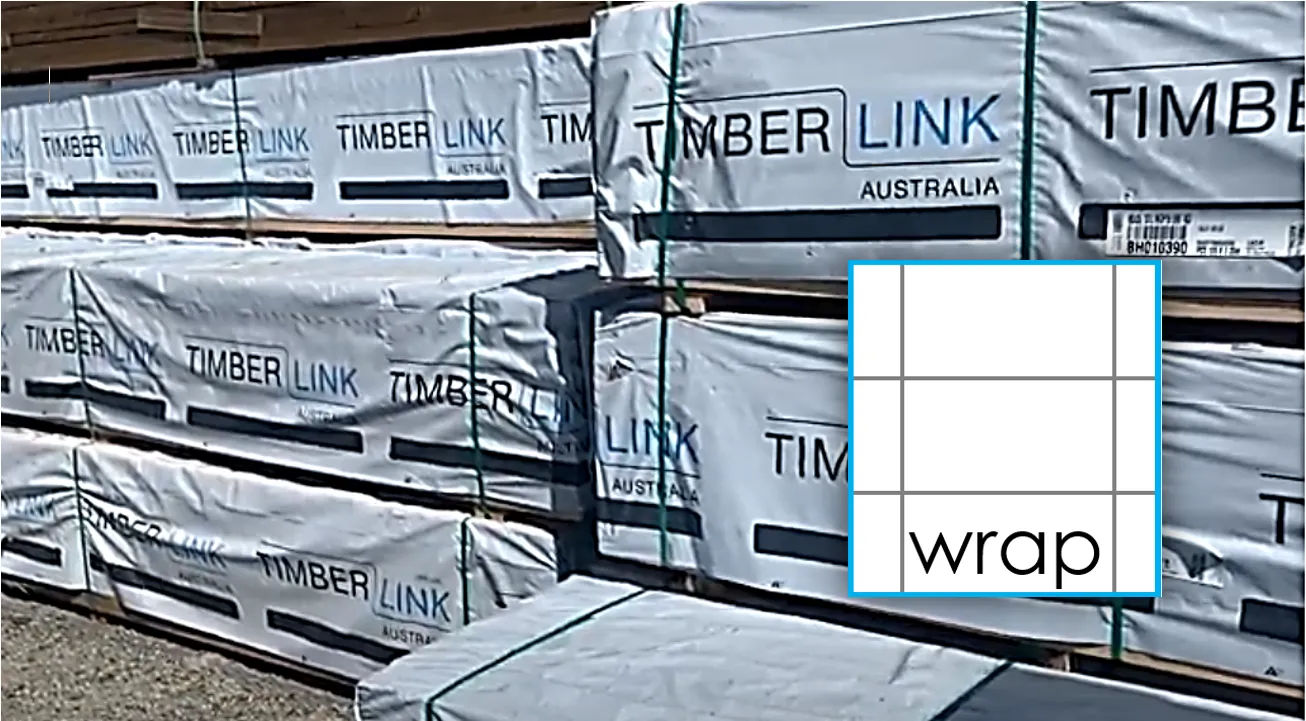Timber care
To keep your timber straight, it is best to remember these simple tips:
Stack, Strap and Wrap!
What causes movement in timber?
Timber is a natural product. This means that exposure to changes in temperature, moisture, sun and wind can alter the product’s moisture content and stability, so it is very important to store the product correctly.
Timberlink’s technical team and industry scientists have worked over many years to find the ideal moisture content for the harsh Australian climate to ensure timber stays as straight as possible during humidity and temperature changes. This is around 10 – 12 %.

Stack!
The best defence to keep your timber straight is to stack it correctly (like the picture above). Pieces should be lying flat on top of one another, with longer pieces on the bottom so ends don’t overhang.
We’ve all seen customers in a rush go through the timber rack, taking what they need and leaving the rack untidy with lengths of timber on an angle across the whole stack. If left unchecked this can become a complete mess.
What some people do not realise is because timber is a natural product, the longer you leave the timber twisted and not supported along the full length, the more it will move.

Strap!
We know you are busy, however your timber will stay much straighter if you take some time at the end of the day to strap it.

Wrap!
If you do not have room to store your untreated timber undercover, try to keep your timber “wrapped” to avoid letting moisture get in.
Keep it Dry!
Changes in moisture can make timber expand, shrink, bow and twist, and prolonged exposure to moisture can lead to mould.
Keeping your timber dry and your site clean are the best weapons in the fight against mould. Mould lives in the air, in soil, on vegetation and many surfaces. Moulds are naturally occurring and are always present in the environment.
Timberlink Green H3 timber is protected from most fungi and mould attacks.
Timber Care Video – What Timberlink is doing to improve timber quality
In the below video we show you some of the things we are doing to deliver a more consistent stick of timber.
Extra tips
- Store your timber off the ground – place on bearers, do not allow timber to sit in or above pooled water
- Store your timber under cover whenever possible – keep wrapped if storing outside
- Keep in a clear area – try not to place timber below trees that are dropping excessive leaves and branches
Protection against excessive moisture is the best option to reduce the likelihood of mould. However, as mould is prevalent in the environment these measures are not guaranteed to prevent mould.
It is important to remember that mould on timber is an aesthetic issue and is not detrimental to the structural integrity of timber. The types of mould typically found on timber are not considered harmful and have been found to have no negative health effects at commonly encountered concentrations.